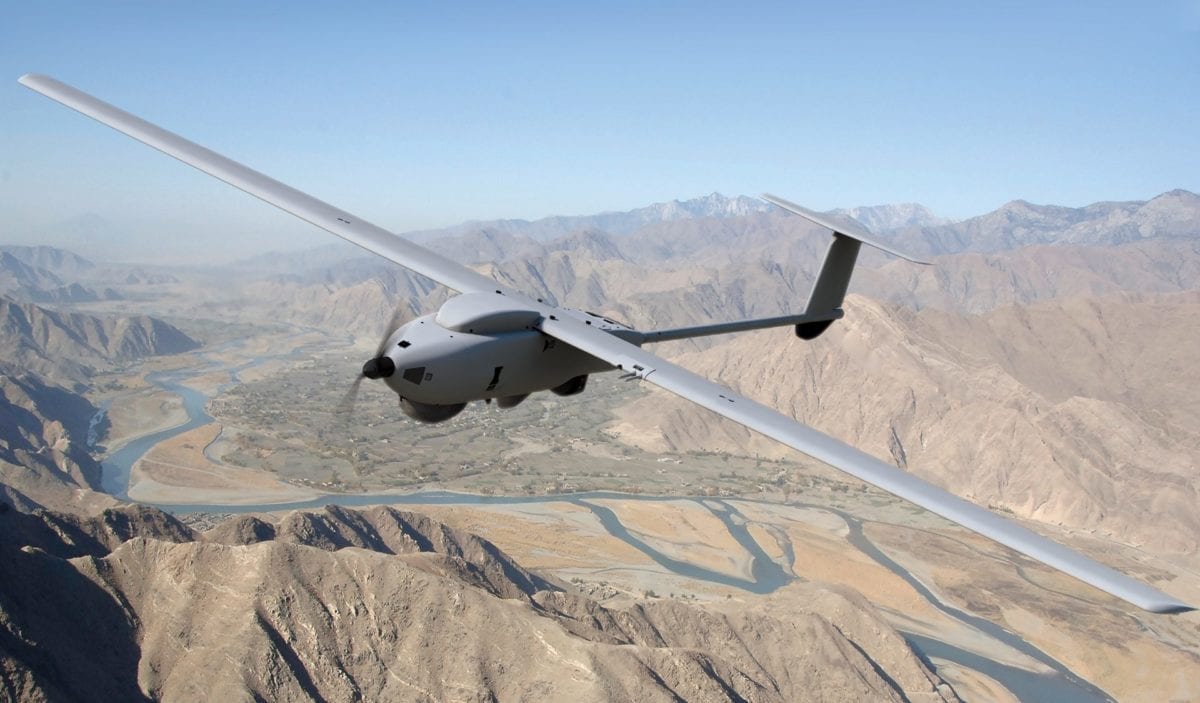News
Experimental Liquid Hydrogen Storage Propulsion Systems for Drones
Jerzy Dutczak of the Faculty of Mechanical Engineering Cracow University of Technology has compiled a collection of works on UAV’s using chemical hydrogen storage in contemporary small drones’ fuel cell propulsion systems. The paper is titled, ‘Liquefied and chemical hydrogen storage in contemporary small drones’ fuel cell propulsion systems‘.
Contemporary manufactured small UAVs and drones mostly use electric engines. Application of such propulsion systems need elaborating of efficient and light electric energy sources. There are used at present mainly two methods of on-board energy storing. First is usage of possibly efficient batteries.
The second method is production of electric energy on-board with use of fuel cells (FC). That way requires the pure hydrogen fuel to be supplied to FC. Hydrogen can be stored in compressed state in pressure bottles or in liquid state in cryogenic tanks. The other much safer way of hydrogen storage is use of the chemical compounds containing that element.
Some examples of methods of liquefied and chemical hydrogen storage and on-board production on the base of constructions of UAVs’ propulsion systems are presented below and listed according to UAVs manufacturer’s names and particular technical solutions.
Ion Tiger UAV, liquid hydrogen fuel cell version U.S. Naval Research Laboratory (NRL) has been leading research on liquid hydrogen fuelling of drones parallel to compressed gas feeding. A UAV fed with liquid hydrogen was tested in 2013. Hydrogen stored in a lightweight cryogenic tank along with Protonex’s 550W fuel cell enabled Ion Tiger to fly for 48-hours and 1 minute on April 2013. Density of liquid hydrogen (LH2) is three times more than compressed one allowing increase of flight endurance. The Ion Tiger would be able to fly for 4 hours (only) on the comparable weight Li-Po batteries.
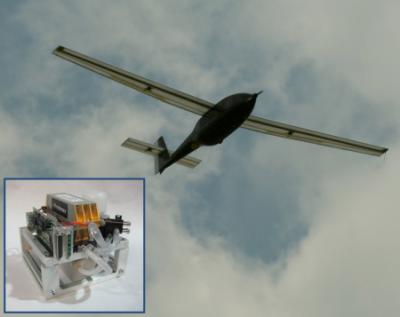
The Ion Tiger in flight and a 550 W fuel cell (insert)
Hylium Industries Inc. — liquid hydrogen fuel cell system South Korea’s company Hylium Industries Inc. is a manufacturer of cryogenic equipment for helium and hydrogen storage in liquid phase established in 2014. The present proposal of Hylium Industries is related to small UAV’s propulsion. It is a LH2 fuel cell system mounted in a 6-propeller multicopter aimed mainly for civil applications. According to company’s information the cryogenic LH2 vessel has been used as fuel tank of that UAV. Hylium Industries Company also offers a “portable” LH2 refuelling set presently.
Chemical hydrogen storage – Examples of results of research of Sodium borohydride by Department of Aerospace Engineering, College of Engineering, Chosun University, South Korea involving a NaBH4 hydrogen generator with volume-exchange fuel tank, an interesting design of a H2 fuel supply system incorporating fuel cell and the sodium borohydride (NaBH4) hydrogen generator was presented in 2014. The water solution of NaBH4 containing about 11% of hydrogen was a hydrogen source for FC stored in a fuel tank. The equation: NaBH4 + 2H2O → NaBO2 + 4H2 was a base for obtaining the H2 during the hydrolysis. Initiation of that process takes place at room temperature without need of heating from external source.
The Marmara Research Centre Energy Institute and National Boron Research Institute (Turkey) are working on developing a Hydrogen Generator system with Co-B catalyst and FC system utilizing 20% NaBH4 solution and a 200 W fuel cell system. A light weight (0.6 kg) hydrogen generation system using also a cobalt-base Co-B catalyst was delivering about 5 dm3 /min of hydrogen. A FC system of mass 1.6 kg was generating more than 200 W at about 24 V. An experimental UAV equipped with hydrogen generator and FC stack had wingspan of 2.5 m and total weight 7.5 kg.

Scheme of fuel supply system using NaBH4 hydrogen generator

Experimental UAV fitted with hydrogen generator working on 20% water solution of NaBH4 and FC system developed by Marmara Research Centre Energy Institute and National Boron Research Institute (Turkey)
BALLARD — Sodium borohydride cartridges (one time use), One of the ways to store hydrogen for small UAVs is application of one time use chemical hydride cartridges. The idea of such solution has been already presented in an author’s article at the case of H3 Dynamics’s AEROPAK-L using a hydrogen-rich liquid chemical cartridge with combination of PEM fuel cell. Hydrogen can be released on-demand as the fuel cell requires it. Ballard-Protonex Company elaborated such system which is load-dependent and can achieve full hydrogen output in 3-5 seconds from the start-up and stop hydrogen production immediately when there is no demand. The hydride cartridge can be installed before flight and work with the fuel cell to generate energy for electric engine driven propeller.

Ballard-Protonex’s NaBH4one time use cartridges 1350 Wh
Korea Institute of Science and Technology — Ammonia borane (NH3BH3) Ammonia borane (NH3BH3) is a chemical way of hydrogen storage similar to discussed above. The hydrogen storage capacity in this case can reach 19.6 %. The hydrogen generator working according to this principle was applied by the Fuel Cell Research Centre at the Korea Institute of Science and Technology to power a small electric motor driven UAV in 2013 [13]. The process of hydrogen release took place in 85–145 0C according to the following equation: NH3 + BH3 / NH2BH2 + H2. The experimental RemoEye-006 UAV of 2.7 m wingspan and 1.7 m length manufactured by Uconsystem Corp. (South Korea) equipped with mentioned system and 200W PEMFC demonstrated
relatively long flight (57 min).
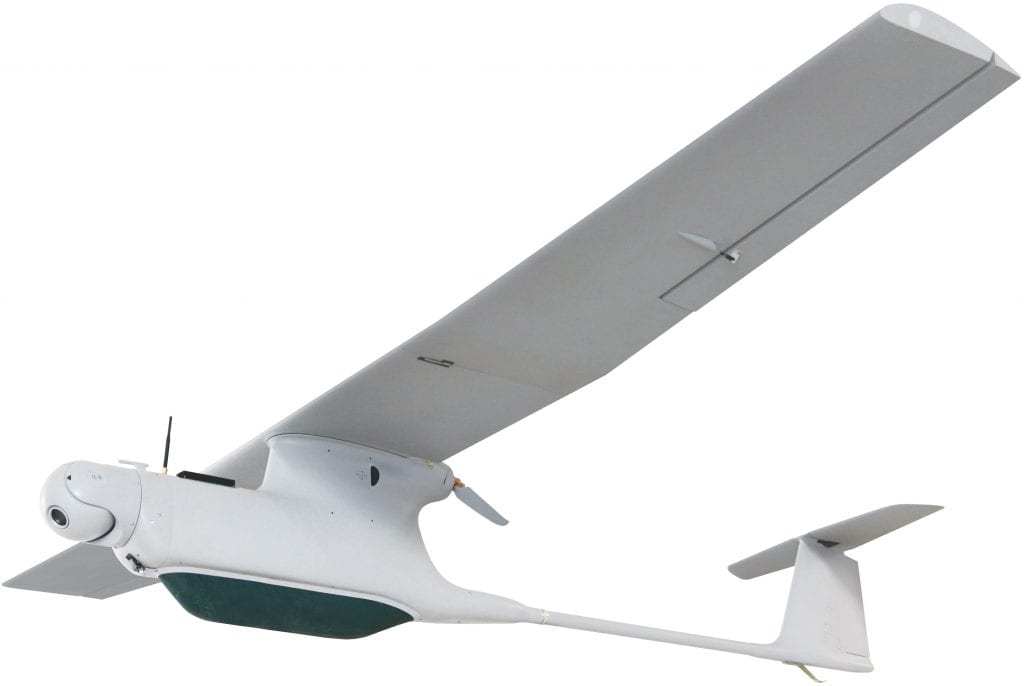
RemoEye-006 UAV manufactured by Uconsystem Corp.
Cella Energy and the University College London — demonstrated Ammonia borane (NH3BH3) The very innovative design of ammonia borane (NH3BH3) application to UAV propulsion in 2016 in collaboration with the Scottish Association for Marine Science and Arcola Energy. Cella used own elaborated and manufactured solid pellets contained NH3BH3 with 12 % H2. That way enabled safety hydrogen storage in the unpressurized cartridge at room temperature. The plastic-like pellets were made of a proprietary chemical compound incorporating a polyethylene oxide polyether as shown in figure 13. According to Cella one gram of the pellets can release up to 1 dm3 of H2 when heated to 100-120oC in about 3 min after start-up. The Cella pellets were stored in the wings.

Scheme of Cella’s pellets construction inside a drone wing

Flight of experimental Raptor E1 equipped with Cella’s hydrogen pellets stored in the wings
Liquid hydrocarbons storage – NHA University (South Korea) — used Direct Methanol Fuel Cell (DMFC) The example of application of a DMFC for UAV propulsion in 2013. Developed 200W DMFC system was mounted together with Li-Po auxiliary battery system in an 11 kg UAV with a wingspan of 2.64 m and total length of 1.65 m.

Elaborated and tested by INHA University DMFC mounted in UAV
Silent Falcon UAS Technologies —used Formic acid (CH2O2) Proton Exchange Membrane Fuel Cell The similar process to DMFC takes place in a formic acid (CH2O2) Fuel Cell, with Neah Power Systems Inc. in 2014. Formic acid releases H2 according to the equation: CH2O2/ H2 + CO2. That solution was to be used in the Silent Falcon UAV. There is no however reliable information yet about results of these researches.

Solar-electric Silent Falcon UAV in present basic version
Lockheed Martin and DARPA — developed Methane or propane Solid Oxide Fuel Cell (SOFC) application of a SOFC enables to drive the drone with conventional hydrocarbon fuels. Tests of that kind of propulsion have been carrying out for more than 10 years. One of early probes was conducted with Stalker XE UAV (Stalker eXtended Endurance UAV) in 2011-2013 which was driven by a SOFC that used LPG or propane as a fuel. This construction provided enough energy to fly more than 8 hours what was three times more than basic Stalker version.
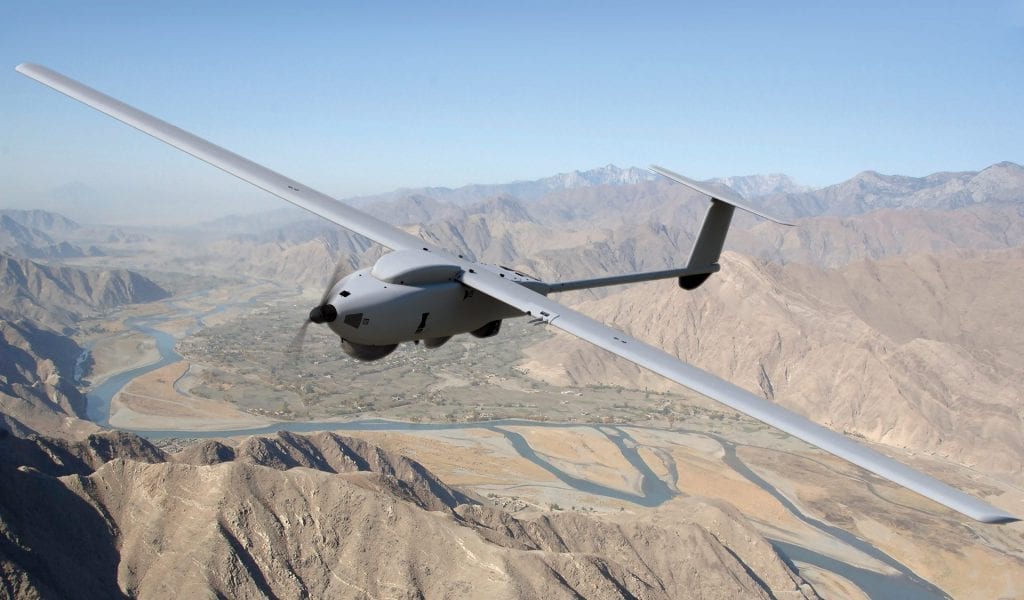
Stalker XE UAV
The NASA programme carried out with AeroVironment Inc. between the years 1981–2001 was one of pioneering projects of solar-hydrogen drones. As a result of previous research the huge 75 m wingspan solar-hydrogen driven High Altitude Long Endurance (HALE) UAV was built. Lightweight and flexible photovoltaic cells were provided by the firm Alta Devices. Helios HALE UAV performed high-altitude flight in the summer of 2001 reaching 29500 m and setting the world records in flight endurance and altitude.
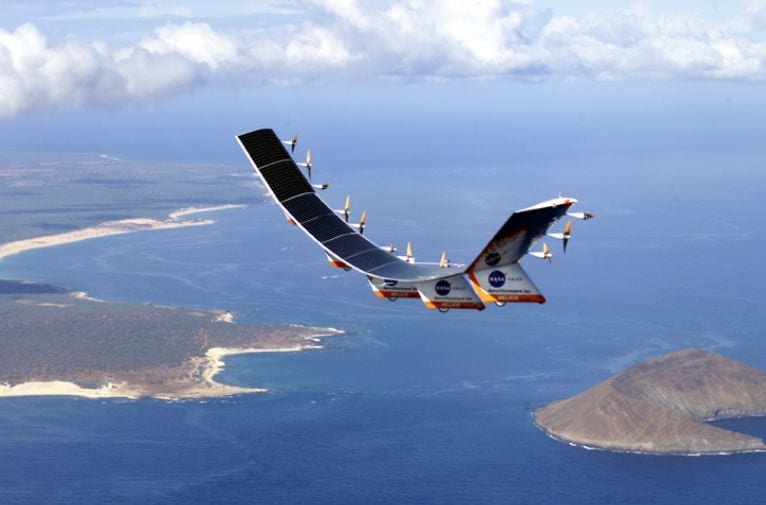
Solar-hydrogen powered Helios UAV equipped with photovoltaic solar cells
Hybrid Tiger UAV US Navy Research Laboratory (NRL) has been testing a prototype of new version of described above Ion Tiger UAV called Hybrid. This drone which is the successor of Ion Tiger described above, but this time has been using a combination of hydrogen fuel cell with solar photovoltaic panels mounted on the upper surface of the wings.
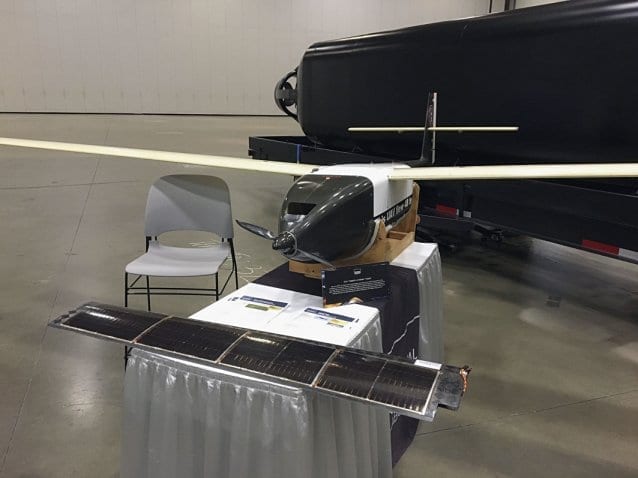
NRL’s Hybrid Tiger UAV driven with H2FC and photovoltaic panels
The hydrogen fuel cells application for drones’ propulsion is one of the directions of contemporary research works. Conception of hydrogen storage in liquid state or in chemical compounds on-board of UAV is still difficult to apply because of many technical issues. Presented above results of researches are mainly of experimental character but indicate one of the probable future development in this field.
Citation: Liquefied and chemical hydrogen storage in contemporary small drones’ fuel cell propulsion systems, J Dutczak 2018 IOP Conf. Ser.: Mater. Sci. Eng. 421 042015, https://doi.org/10.1088/1757-899X/421/4/042015

